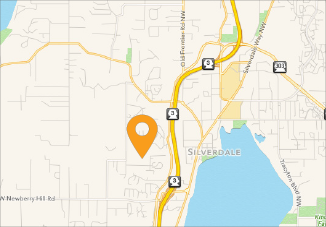Fraidy Cats Need Love Too
February 10, 2015
Stray cats, feral cats, homeless cats – we have many terms for the free-roaming felines in our communities. They may show up because they were dumped by someone unwilling to care for them, or because they were outdoor pets that were chased or frightened away from their home territory; these strays are often easy to approach and may even seek out human companionship. Most of the homeless cats we see living on the streets or in greenbelts, though, are ferals – they have spent most or all of their lives outdoors, fending for themselves. They are “fraidy cats,” similar to wild animals: afraid of people, averse to being enclosed, and perhaps even aggressive if approached. Feral cats often congregate (and unfortunately multiply) in cat colonies. They try to fend for themselves, sheltering under porches, scavenging in garbage and hunting for meals; but especially in the colder, wetter months they can really benefit from the kindness of people who live in the neighborhood. “Fraidy cats” can benefit from safe feeding stations; dry, insulated outdoor shelters; Trap/Neuter/Return (feral fixing) programs; and basic health care or injury care. Why – aside from simply caring for our fellow creatures – might you want to help your neighborhood’s feral cats? First and foremost, when a neighborhood supports a healthy feral cat population, rodent populations are kept in check. This eliminates the need for exterminators, or for harmful chemicals or poisons. With rodent control, residents of the neighborhood are protected from the damage and diseases caused by mice and rats. Helping to care for the neighborhood cats can also help to teach the neighborhood kids to show kindness and respect for life. In addition, having a healthy and stabilized colony can prevent the transmission of feline diseases to pet cats and will discourage other (un-fixed and un-vaccinated) feral cats from setting up residence. Helping your community cats by participating in trap/neuter/return programs has additional important benefits. Spayed and neutered cats are healthier overall, and female ferals do not have the physical stress of pregnancy, birth, and nursing kittens. Having neutered males and spayed females noticeably decreases fighting, spraying, and yowling associated with heat cycles and mating. And once all of the cats in a colony have been fixed, no more homeless kittens will be born; the colony population will stabilize and eventually be reduced by natural attrition. If you know of homeless cats in your community, you and your neighbors can help them in the following ways: Participate in a Trap/Neuter/Return program like Kitsap Humane Society’s Community Cats program. Provide shelter – Cats don’t need a lot of space, just a space that is large enough for them to stand and move about and stay safe from the harshest outdoor elements. There are many Do-It-Yourself outdoor cat shelter projects to be found online, or you can purchase ready-made shelters. The best outdoor cat shelters are warm (some sort of insulation), dry (protected entrance and straw instead of blankets inside), and safe (small entry and raised off the ground to protect from predators). Provide food and water – A feeding station where cats are given food daily will help them maintain their energy requirements (a dry kitten-formula food is a great way to provide them the extra needed nutrients to stay healthy). Access to un-frozen water in the winter is also important. Feeding/watering stations should be protected from the elements and placed close to the shelter. It is important to feed close to the same time each day, and to remove food not eaten in about an hour’s time, to keep other animals and predators from taking the food. While the cats may not be able to thank you in ways you can understand, both the cats and the neighborhood will benefit.



